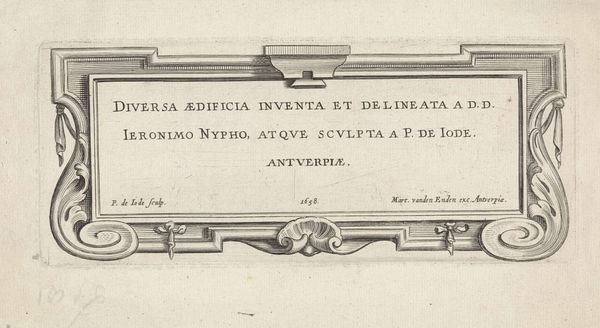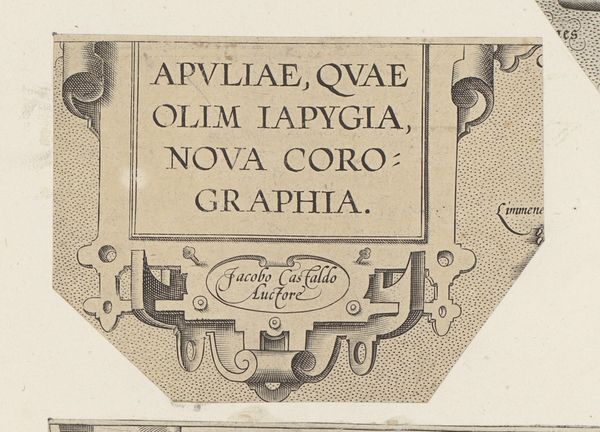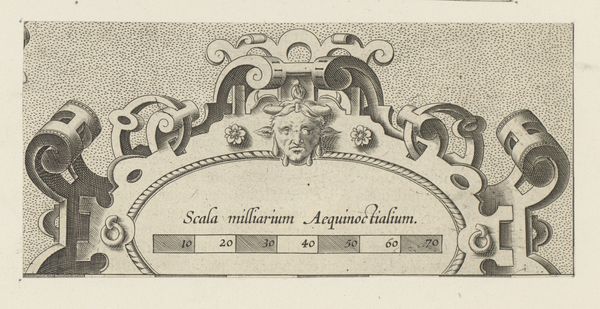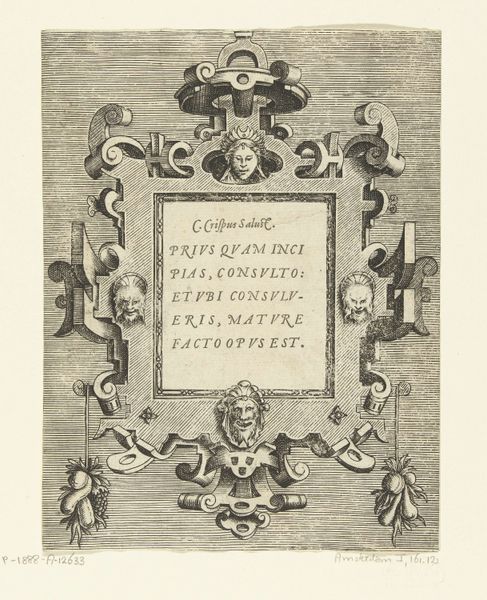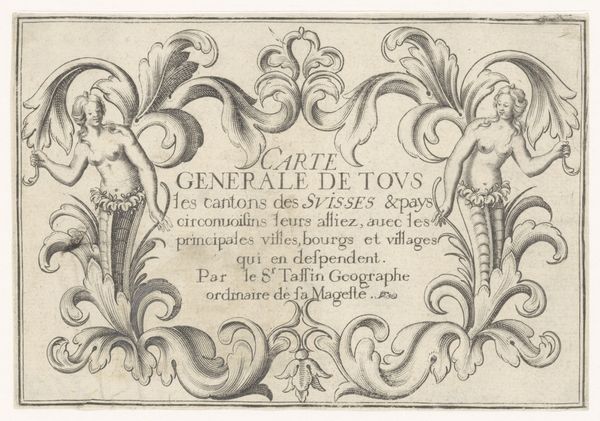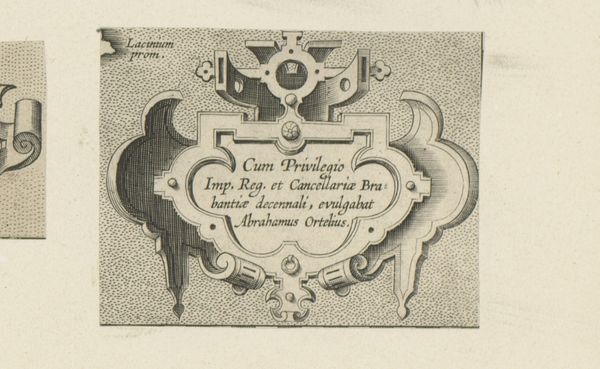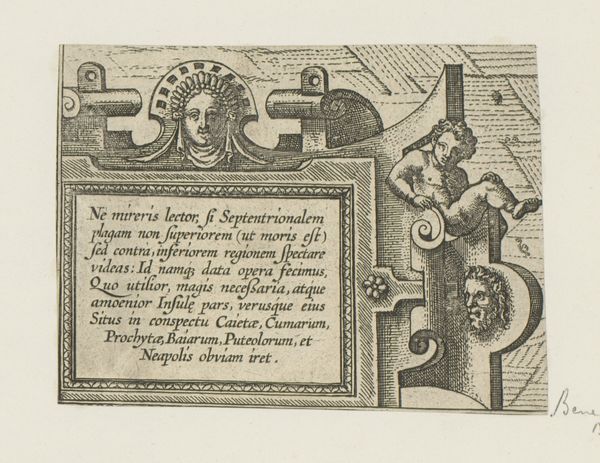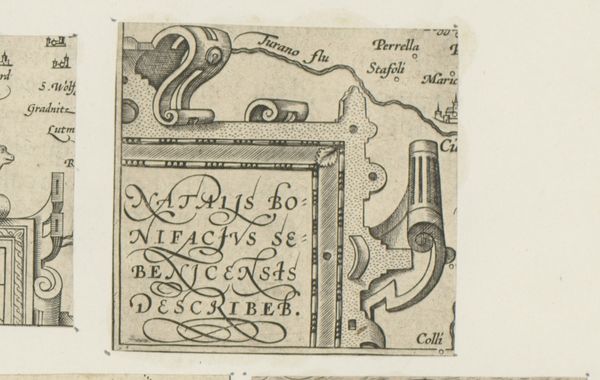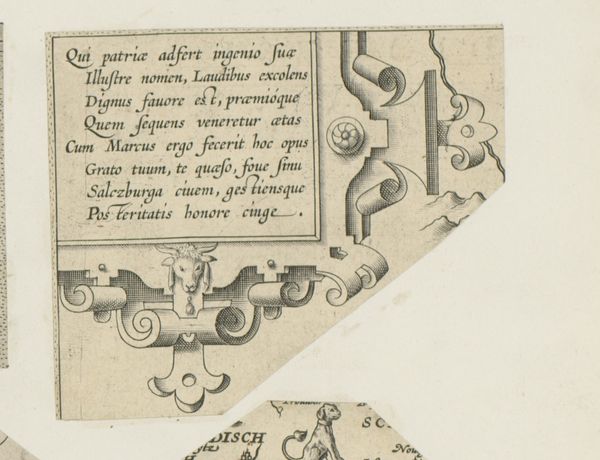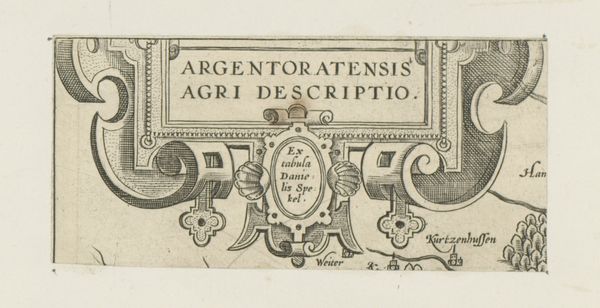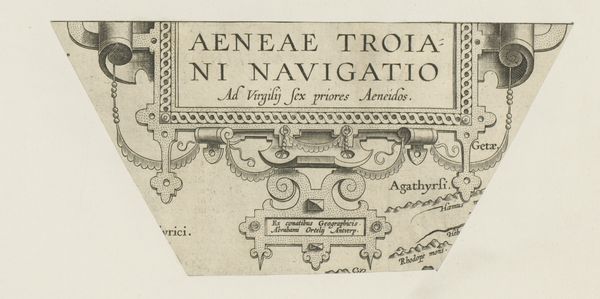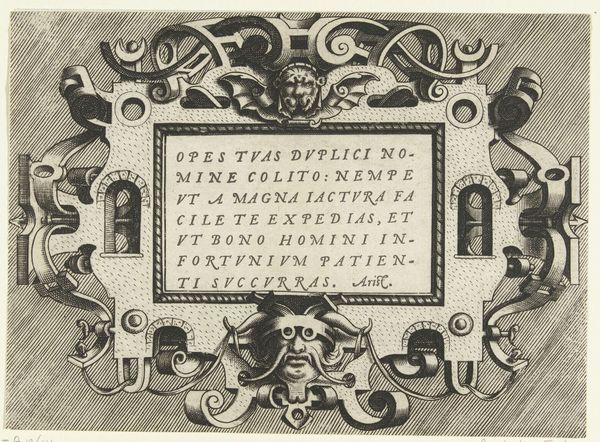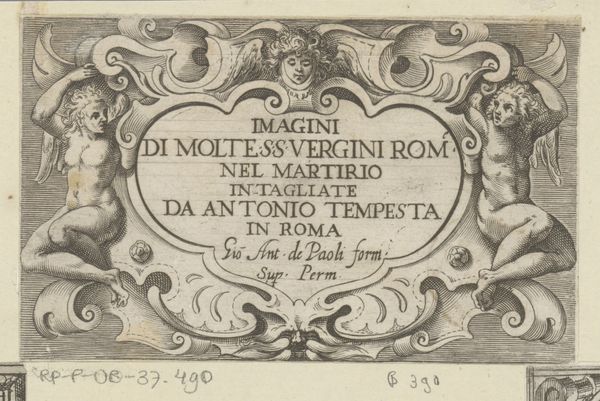
graphic-art, print, engraving
#
graphic-art
#
baroque
#
ink paper printed
# print
#
old engraving style
#
engraving
Dimensions: height 76 mm, width 129 mm
Copyright: Rijks Museum: Open Domain
Curator: This intriguing graphic piece, crafted around 1595 by an anonymous artist, presents itself as "Halve cartouche met rolwerk," an engraving on paper. Its graphic quality really sings! Editor: Yes, immediately striking. There's a stark quality to the engraving—a sense of formal reserve, perhaps befitting its presumed function. It really conveys an air of classical authority, though softened somewhat by the swirls and flourishes. Curator: Indeed, the baroque influence is quite evident in the ornamental flourishes and elaborate design of the cartouche itself. But let's consider its purpose. The cartouche, likely part of a larger map, would've framed essential information, lending legitimacy and importance through material presence. The work becomes not just decorative but functional. Editor: And we see that function explicitly written into it! I see, "IAPONIAE INSVLAE DESCRIPTIO," Description of the Islands of Japan! Ludovico Teisera is credited as the author here. Thinking of how such maps would have been used—the institutions that would have commissioned and consumed them—that speaks volumes about Europe’s burgeoning interest in the East. Curator: Absolutely. The materiality here matters deeply. Paper and ink, relatively accessible printmaking techniques, allow for reproduction and wider dissemination of knowledge—a subtle power shift away from unique, handcrafted artworks available only to elites. These allowed, even pushed for, increasingly complex socio-political forces across Europe, changing the way maps are material culture in the 16th century. Editor: Yes, it really is fascinating how these printed images facilitated the construction of geographical knowledge. Disseminating information— but also, implicitly, establishing control. The cartouche, then, is not just a frame but a vehicle for ideology. It speaks of ownership, exploration, and perhaps even a nascent colonial ambition. Curator: Looking at the materials, I wonder about the engraver's tools, the paper mills, the trade networks required. Understanding these systems provides a critical insight to both the artist and author. Editor: Agreed. It offers us insight to what's possible at this period. This piece opens up such avenues of investigation. It allows a deeper appreciation not only for the aesthetic but also for the societal framework.
Comments
No comments
Be the first to comment and join the conversation on the ultimate creative platform.
